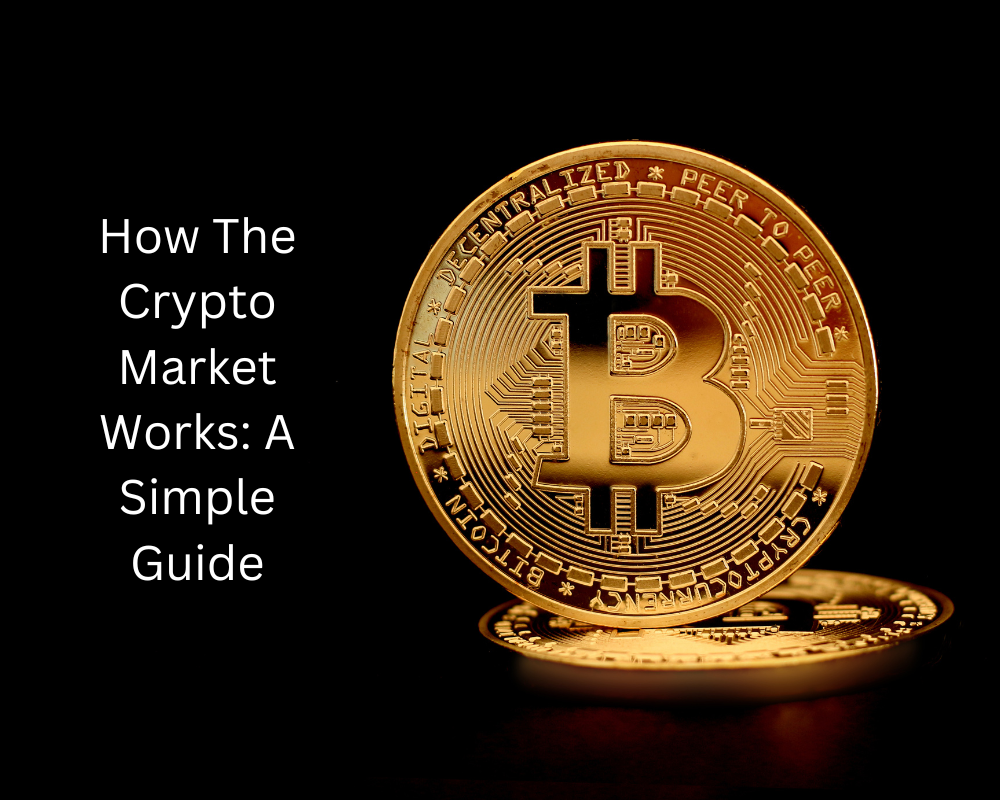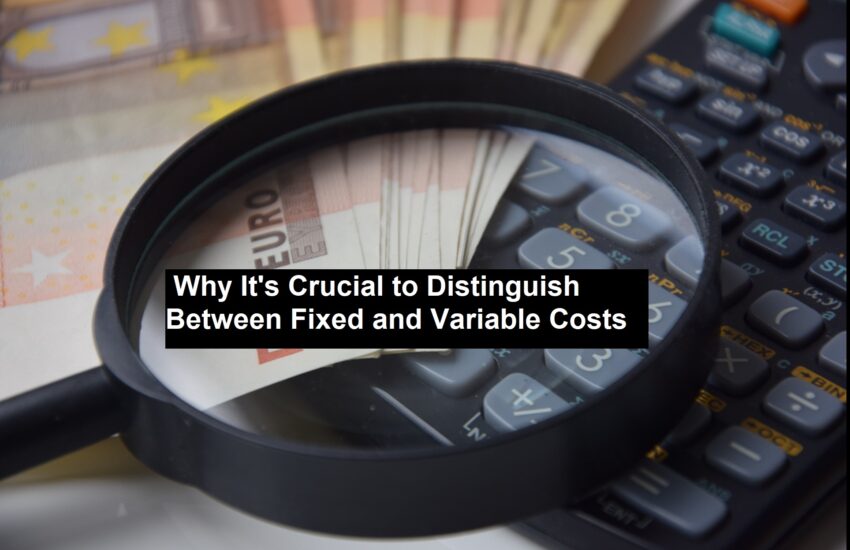How The Crypto Market Works: A Simple Guide
Look at you, all ready and confident to take on your first baby steps into the unknown landscapes of the cryptocurrency industry, dedicated to making it your own world where you can earn, learn, and become even more amazing when it comes to investing! But not so fast my friend, after all, it’s always best to traverse this world with a little bit of backup information so you don’t get lost amidst the information overload that’s prominent within industries like these!
Like a kid in the middle of a buzzing bazaar, you’d need an adult’s (in this case an expert’s) hand and guide to make sure you’re not doing things wrong, or much worse, get lost! So how about we take you on a little trip to acquaint you first with cryptocurrency and how it works?
In that case, let’s start with the basics, then towards more complex stuff and finally, to what’s the hottest cryptocurrency trends in the market now that you can put your money in and expect great chances of profits!
Cryptocurrency Basics
At its core, cryptocurrency is digital money, you know, Euros, Dollars, Pesos, etc.
You basically use it for payments, remittance, sometimes even taking and paying out loans, the works. It’s called cryptocurrencies because they are minted (the act of creating a bona fide and legally accepted currency or monetary affects) through cryptography which is pretty much like cracking out puzzles and trick questions.
In a way, when you mint/mine cryptocurrencies, you’re doing it with the prospect of getting paid, but instead of receiving fiat (cold hard cash), you’re getting what could only be considered as a virtual currency which pretty much works the same way as your regular money.
You could obtain cryptocurrencies through 2 means, first and the arguably the most basic yet most expensive way of obtaining it which is mining, where you’re literally scouring the internet for details on where these cryptocurrencies could’ve been embedded, Once you find the spot where they are stored, you get to keep the block and of course the cryptocurrencies that come with it. Cryptocurrency can be a volatile asset, understanding its basics can help inform your retirement savings strategy and diversify your portfolio.
With that being said, how about we talk about the magic sauce that ties all of this together in a grand ensemble, Blockchain Technology?
Blockchain – The Ledger of the Future
If you’re not living under a rock or something, there’s a good chance you know what record books/ledgers are. But just in case you don’t, here’s a little important mini-explainer which will be very vital in understanding what blockchain technology is!
Ledgers are handy-dandy record books that keep track of just about anything that you need to record. Transactions, possessions, people you’ve interacted with over the past few years through business and whatnot, you name it. If it’s something that warrants you keeping the information for a long period of time, you’d definitely need a ledger for it.
Blockchain is pretty much like that, but in this case, it’s a publicly accessible ledger of everything about cryptocurrencies. Money, transaction records, addresses of who’s who, everything really. The rise of blockchain, the future ledger, is prompting a fundamental reevaluation of the Central Bank’s role, pushing them to consider potential opportunities and challenges as guardians of financial stability and monetary policy. The fact that it’s externally accessible, easily available to emulate and all that nice stuff is the reason why cryptocurrencies exist. Without blockchain, none of the core functions of a cryptocurrency wouldn’t work! Thank you blockchain technology!
By the way, the reason why it’s called blockchain is because data within this whole virtual contraption gets stored on “blocks”, which are large chunks of data reservoir where you can embed data for future preferences, to make sure that this information you embedded is accessible and trackable, every block with relation to each other is linked, hence the “chain” part of the term itself.
The coolest thing about these bad boys is that not only can they be implemented within the cryptocurrency world, but as luck would have it you can pretty much integrate blockchain over anything that harbors large amounts of data! This paves the way for concepts like Web 3.0 (the next phase of the internet that’s powered by ownership, transparency, and decentralization thanks to blockchain technology) to take shape and inspire builders and devs to put in the work. But enough about that, let’s get back to cryptocurrencies, shall we?
Read: Simple Ways To Cut Down Your Weekly Spending
How Transactions Happen
Transactions are the bread-and-butter combo of the cryptocurrency world. It’s what you would do 90% of the time in the crypto world, and maybe even just transacting if you’re not someone who’s keen on building or developing in the industry.
Suppose you want to send some cryptocurrency to a friend from the other side of the planet, which cryptocurrencies are particularly great at. It takes more than just a “send” button for the whole thing to carry out, although the simplicity of the process as well as the quickness of how it’s resolved may make you think otherwise.
Anyway, when you initiate the sending of such crypto to your friend, your request for sending is made and is then recorded on the blockchain. Miners, who are the resident bookkeepers of the industry, as well as the ones who mint these cryptocurrencies for usage, verify the transaction you made, and when it’s greenlit, it gets sent into the blockchain. While the crypto market buzzes with digital transactions, a growing niche finds beauty in tangible treasures, with Etsy leading the charge in crafting/handmade goods traded for Bitcoin and beyond. When all of this is resolved, your friend gets the money you sent them, it’s recorded on the blockchain for future reference, and you pay a small fee to the miners for helping you process your transaction.
Push comes to shove transacting with cryptocurrencies is as easy as sending an email in a way or two.
Bitcoin – The OG Cryptocurrency
You can’t talk about cryptocurrency without gliding over the very thing that started it all!
Back in 2009, just after one of the worst financial disasters the world has ever experienced, someone named “Satoshi Nakamoto” as well as a couple of other blokes would create what was once an economically-independent form of currency that you can use to pay and finance stuff. Little did they know, they’d make history by giving birth to the trillion-dollar industry that you see today.
Bitcoin was initially thought of as nothing but a means for you to pay and send money overseas. You convert your money into bitcoin, you send it over to your friends or pay with it over the internet, and that’s about it.
It wasn’t until people realized that the more users get on board, the more valuable its native currency becomes, Soon enough, they see this as a way to profit off of, reintroducing Bitcoin to the public as not only a payment system, but also as a store-of-value that you can use in exchange for gold if you want to make sure your money doesn’t lose its value over the years to inflation.
Nowadays, it’s still the most valuable cryptocurrency in the market, with a price teetering over the $30k mark—highest of any tradable asset in the market mind you, with prospects of rising even more in value over the following months as we approach the bull market season.
Altcoins – The New Kids on the Block
Bitcoin might be the star, but there are thousands of other cryptocurrencies, known as altcoins (short for alternative coins). These can serve various purposes, from speeding up transactions (Litecoin) to enabling smart contracts (Ethereum). It’s like having different tools in a digital toolbox, that you can also use somehow to make money out of!
Crypto Exchanges – The Digital Marketplace
So, where do you buy and sell cryptocurrencies? At crypto exchanges, of course! Think of these as the online marketplaces where you can trade your digital currencies. Some popular exchanges include Coinbase, Binance, PancakeSwap and Uniswap. They act as the virtual hub for commerce and trade in the industry. You want a coin bought/sold? You gotta use these if you want the process to be easier.
Initial DEX Offerings (IDOs)
Now, let’s talk about Initial DEX Offerings (IDOs). These are like the new kids on the crypto fundraising block. In simpler terms, IDOs are a way for new cryptocurrency projects to raise funds directly from the public. It’s like a crowdfunding campaign, but instead of traditional currency, you use cryptocurrencies to buy tokens of the project.
IDOs typically take place on decentralized exchanges (DEXs) and are open to anyone who wants to participate. It’s a way for regular folks like you and me to get in on the ground floor of promising crypto projects, at least in the current age of cryptocurrencies.
Final Thoughts
In a nutshell, the crypto market is a digital playground where you can buy, sell, and trade cryptocurrencies. It’s powered by blockchain technology, and Bitcoin is just one of many digital currencies available. You pretty much could do a lot of stuff in the industry, whether it’s investing, trading, holding, or creating. But if you’re trying to hold or buy some crypto, consider looking at IDO Launchpad as your primary source of info, they’re transparent, comprehensive, and you get the guarantee that you’re only investing on projects with a future.
Remember, while the crypto market can be exciting, it’s also highly volatile. Prices can swing wildly, so it’s crucial to do your research and invest responsibly. Now that you have a basic understanding of how the crypto market works, you’re ready to explore this fascinating digital realm. Happy trading!
Author’s Bio:
Amelia Gomez is a creative writer, marketer, and entrepreneur. With a background in creative writing, she’s passionate about crafting content for crypto projects like Ido Launchpad, Bitcoin, and Etsy. In her spare time, she enjoys writing, sharing laughter with friends, and sipping sweet tea.




